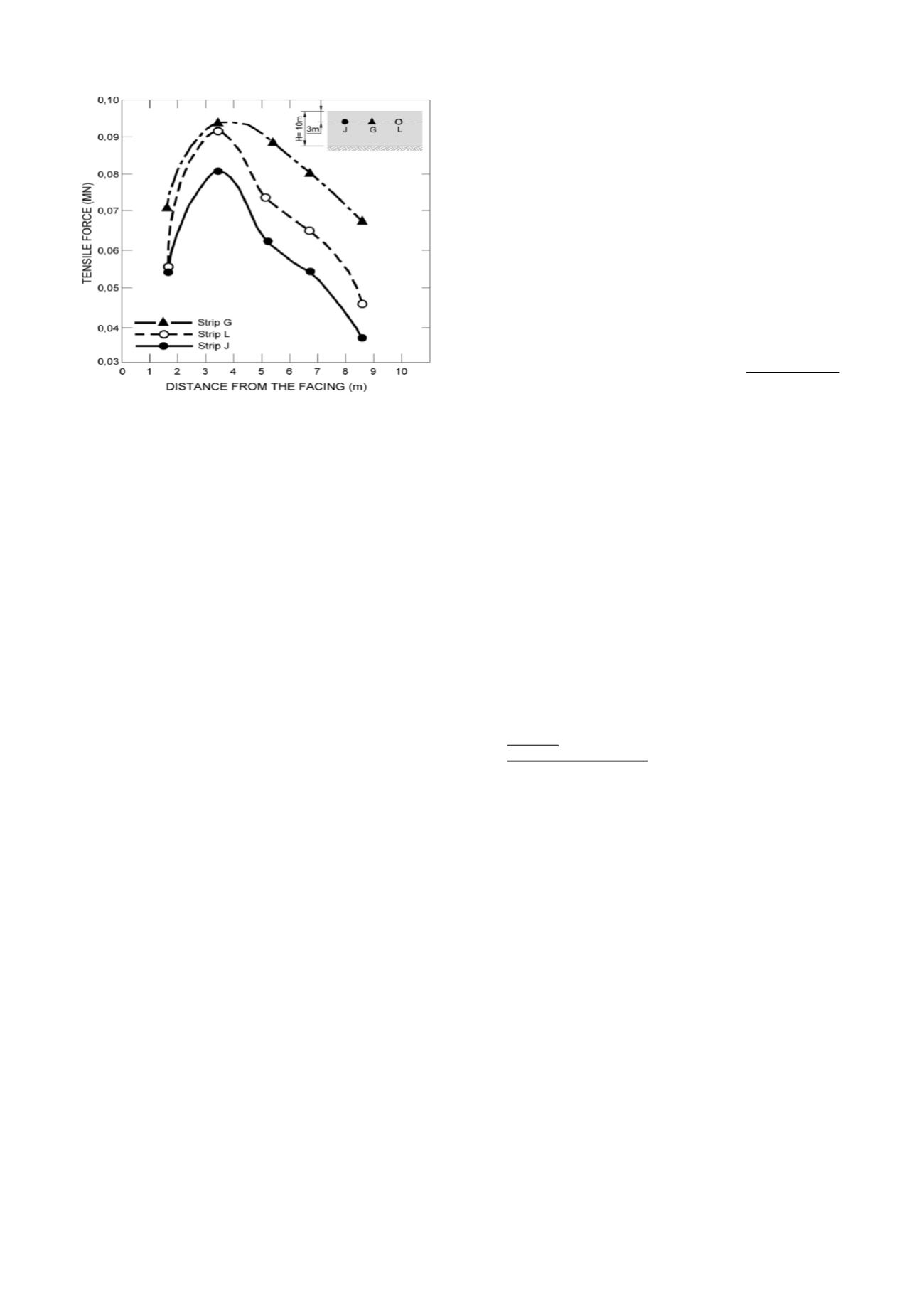

Proceedings of the 18
th
International Conference on Soil Mechanics and Geotechnical Engineering, Paris 2013, volume 6, 2016
Fig. 1: Full-scale experiment performed on the Incarville Reinforced
Earth wall (1968) - Evolution of tensile force in instrumented
reinforcement strips from a bed located 3 m deep
All these LCPC and regional laboratory research projects
were being financed by the Ministry of Public Works, which
oversees LCPC activities. At the time, France had no mechanism
for centralized coordination in civil engineering research.
Universities were not affiliated with these projects and large
national corporations, like the major State Authorities (French
Railways, French Electricity Board, etc.), were conducting their
own research in the field. This was a time when motorways were
first being financed by the State, with design and construction
performed by the Bridges and Highways Administration.
2
LAUNCH OF THE NATIONAL CIVIL ENGINEERING
RESEARCH PROJECTS
It was a Bridges and Highways Engineer, Michel Martin, who
while assigned to the Public Works Ministry's Foreign and
International Affairs Directorate (DAEI) initially nurtured the
idea at the beginning of the 1980's to undertake National Projects
devoted to experimental research in the field of civil
engineering. The focus was placed on implementing quite large-
scale projects and, perhaps more importantly, generating input
from as many participants as possible in both the public and
private sectors on a given research topic.
The underlying principle consisted of asking for a
subscription fee from participants for each year of research, then
offering them the opportunity to take part in financing the
project through in-kind contributions (time allocated, testing,
provision of equipment, etc.) and lastly awarding a financial
subsidy from the Public Works Ministry equal to 15% or 20% of
the total project amount. Two topics were chosen as the
objective for the first experiment: tunnels and the soil nailing
technique for retaining walls. Despite a certain dose of
skepticism at the outset, these two geotechnical projects,
conducted between 1985 and 1989, were a definite success. The
"
Clouterre
" national project (or NP) on this nailing technique,
which started up in 1986 for a 4-year period, comprised 21
members (7 public-sector organizations, 3 public and private
project owners, and 11 contractors). Its budget allocation was set
at €3.15 million, of which 15% was provided by the DAEI
Directorate and the other 85% financed directly by the 21
members through dues and in-kind contributions. The role of
project manager was assigned to a partner: the CEBTP Research
Center, which made its St Rémy-lès-Chevreuse experimental site
available.
After these two initial National Projects, it was deemed
necessary to set up a dedicated organization to accommodate the
collective nature of these NPs in order to handle the tasks of
project management, monitoring and results dissemination.
Against this backdrop, the Ministries of Research and Public
Works in 1989 jointly created the Institute for Applied Research
and Experimentation in Civil Engineering (IREX).
3
THE NATIONAL RESEARCH PROJECTS PROTOCOL
The current protocol, intended to develop the area of applied
research and experimentation in civil engineering, was initiated
around 1990 as a joint effort by the Ministries of Research and
Public Works in response to a proposal issued by the Civil
Engineering Research Advisory Council (CORGEC), whose
members included representatives from the fields of research and
civil engineering.
This protocol entails, first and foremost, validation by the
Public Works Ministry's Research Directorate of a topic
proposed by the profession and based on a feasibility study
conducted by a group of experts under IREX supervision. Such
studies are paid using a Public Works Ministry subsidy, upon
approval by a Civil and Urban Engineering Advisory Committee
composed of researchers affiliated with universities and public
research centers, as well as by professional representatives.
Following this study, IREX assembles a detailed National
Project file that encompasses: the pertinent research program
along with its experimental campaigns, the list of its public and
private partners, a schedule that typically extends four years, and
the project cost and its financing (dues, in-kind contributions,
Public Works Ministry subsidy accounting for 15% to 20%). It
should be noted that this Project file must always include at least
one owner company willing to assume responsibility, whether all
or in part, for a full-scale experiment or the complete
instrumentation of a structure. At this time, it is also requested to
allocate a project promotion budget item in order to produce a
summary of results for subsequent publication in the form of
recommendations or a guide, with in most instances an English
language version made available. Moreover, the most salient
technical breakthroughs are to be presented at international
symposia.
This series of National Projects has spanned a broad cross-
section of the civil engineering field:
1) materials, mainly the various types of concretes;
2) geotechnical engineering, primarily foundations;
3) construction processes;
4) structural rehabilitation and maintenance;
5) sustainable development.
In 2009, for the occasion of IREX's 20-year anniversary, a
National Projects summary document was published under the
title "20 years of applied research and experimentation in civil
engineering". This publication in French provided a 4 to 6-page
description of each of the 26 National Projects, along with their
respective contributions to the field.
The focus herein will be placed on the following NPs, which
lie within or are affiliated with the geotechnical engineering
field, namely:
"
CLOUTERRE
": Soil nailing technique for retaining walls
"
FOREVER
": Technique dedicated to micropile groups and
networks
"
VIBROFONÇAGE
": Vibrating piles and sheet piling
"
ASIRI
": Foundation improvements using rigid inclusions
"
SOLCYP
": Behavior of piles subjected to cyclic loads.
The two following tables respectively indicate the distribution
of project partners and the breakdown in financial amounts
allocated among these 6 NPs.
Volume 6 - Page 76









